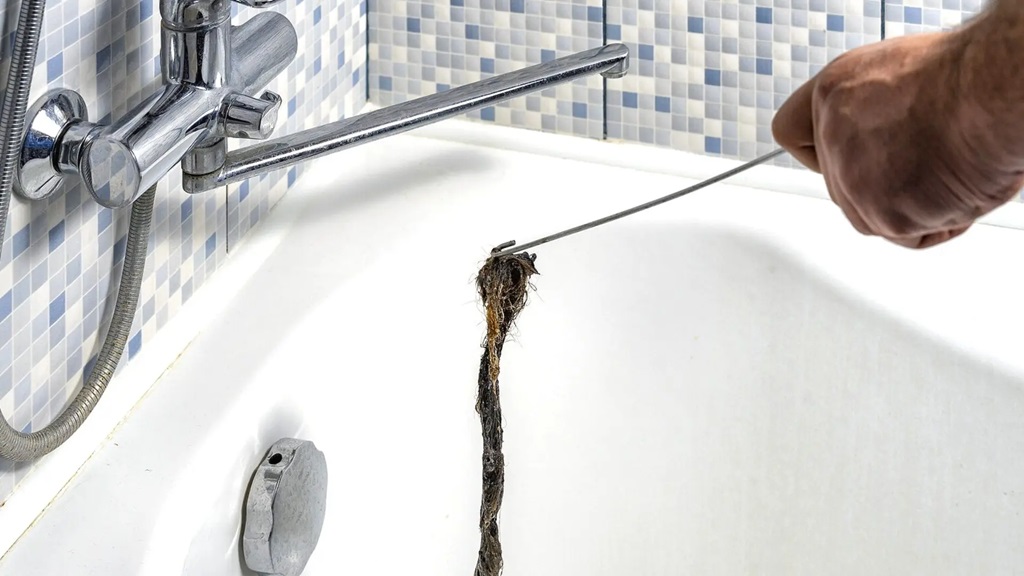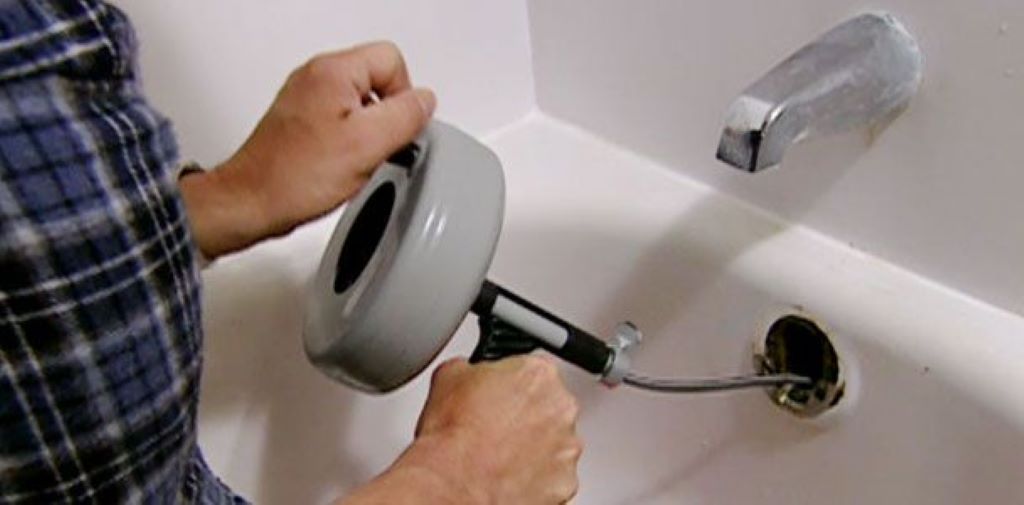Hello homeowners! If you’re having trouble with your bathtub draining water too slowly, don’t worry – I’m here to help you fix it! It can be frustrating when your tub takes forever to empty. With a few simple steps on how to unclog bathtub drain, we can get it back to working properly. So, let’s get started on this journey together and turn your bathtub back into the relaxing retreat it’s meant to be! No need to stress – we’ll make it through this and have your tub flowing smoothly in no time.
The Anatomy of a Clog
Before we dive into the unclogging extravaganza, let’s quickly dissect what we’re up against. Bathtub clogs are like secret agents – they can be sneaky, hiding in plain sight. Hair, soap scum, and the occasional shampoo bottle cap are the usual suspects. They form a clandestine alliance, creating a barricade in your drain pipes. It’s like a traffic jam, but for water.
The Tools of the Trade
1. Plunger Power
If you’re dealing with a stubborn clog in your drain and don’t want to call a plumber just yet, don’t underestimate the power of a trusty plunger. This versatile tool is not just for toilets – it can work wonders for your sink or shower drain too. First, ensure that the plunger is creating a good seal over the drain. Then, use short and forceful plunging motions to create suction and pressure that can dislodge the clog. It’s almost like giving your drain a mini CPR session, with the added benefit of potentially solving your clogging problem.
2. Baking Soda and Vinegar Combo
Have you been struggling with a clogged drain? Summon the power of chemistry with this simple yet effective trick. Begin by pouring a cup of baking soda down the drain, followed by a cup of vinegar. The resulting fizz is like a mini science experiment, but for adults. Allow the mixture to sit for about 15 minutes and follow it up with a stream of hot water. The fizzy reaction of the two ingredients works together to break down any stubborn debris, leaving your drain clear and free-flowing.
3. The Almighty Snake
No, not the slithery kind! A plumbing snake is a long, flexible tool that’s a game-changer in the world of drain unclogging. Feed it down the drain, rotating as you go. When you hit resistance, you’ve found the trouble spot. Give it a good wiggle to break up the clog. It’s like performing surgery on your plumbing.
4. Boiling Water Blitz
When it comes to dealing with a clogged drain, it’s important to remember that sometimes the simplest solutions can be the most effective. You might think that using harsh chemicals is the only way to get the job done, but in reality, boiling a kettle of water and carefully pouring it down the drain can do wonders. The hot water can help to melt away the grease and soap that have built up over time, causing the blockage. It’s like giving your plumbing a warm and comforting hug, and it can be a much more gentle and environmentally friendly way of dealing with the problem. So the next time you find yourself dealing with a clogged drain, don’t reach for the chemicals right away – try boiling some water first and see if it does the trick.
Battle Strategies for Different Clogs
1. The Hair Monster
In case your drain is obstructed by a mass of hair, an individualized approach to the problem is necessary. Wear gloves and extract any visible hair from the opening of the drain. Although the process may be unpleasant, it is a minor price to pay for a smoothly functioning bathtub.
2. Soap Scum Scuffle
Soap scum can be a real nuisance in your bathroom. It builds up over time and can be tough to remove. But don’t worry, there’s a simple solution! Mix equal parts of water and vinegar in a spray bottle and apply the solution to the affected areas. Let it sit for a few minutes to penetrate the soap scum. Then, grab an old toothbrush and start scrubbing. Make sure to reach into the depths of the drain’s soul to get rid of any stubborn build-up. Give your drain a spa day by providing it with a thorough clean. Rinse the area with water and dry it with a clean cloth. Your bathroom will look and smell fresh once again!
3. Foreign Object Face-Off
If you’re experiencing a clog in your plumbing system and you’re not sure why, it’s possible that a foreign object could be the cause of the problem. Using a plumbing snake can help you investigate and extract any potential culprits. This tool is like a detective for your plumbing system, allowing you to thoroughly investigate the issue and get to the bottom of what’s causing the clog. With its flexible design and ability to navigate through pipes, the plumbing snake is an effective and reliable way to clear out any foreign objects that may be obstructing the flow of water in your plumbing system.
Preventative Measures: A Shield for Your Drains
Congratulations, you’ve conquered the clog! But how do you prevent this epic battle from happening again? Here are some preventative measures to keep your drains in tip-top shape:
- Regular Hair Patrol: Make it a habit to clean out visible hair from the drain after every shower. It’s a quick task that can save you from future clogs.
- Monthly Baking Soda and Vinegar Ritual: Like a drain spa day, give your pipes some TLC with the baking soda and vinegar treatment once a month. It’s a small investment in the longevity of your plumbing.
- Mesh Guards: Invest in mesh drain guards to catch hair and other debris before they make their way into your pipes. It’s like a shield for your drains – the unsung heroes of your bathroom.
FAQs
Q1: Can I use chemical drain cleaners to unclog my bathtub drain?
A1: While chemical drain cleaners can be effective, they often contain harsh chemicals that can damage your pipes over time. It’s best to opt for natural solutions like baking soda and vinegar or mechanical methods like plunging and snaking.
Q2: How do I prevent hair clogs in my bathtub drain?
A2: Consider using a mesh drain guard to catch hair before it goes down the drain. Additionally, make it a habit to clean out any visible hair after each shower.
Q3: What if the clog is deep in the pipes and I can’t reach it with a snake?
A3: If the clog persists, it’s time to call in the professionals. A professional plumber has the tools and expertise to tackle more stubborn clogs deep within the plumbing system.
Q4: Can I use the baking soda and vinegar method regularly?
A4: Yes, you can use the baking soda and vinegar method once a month as a preventative measure to keep your drains clear. It’s a gentle yet effective way to maintain your plumbing.
Q5: How do I know if the clog is beyond my DIY capabilities?
A5: If your efforts don’t yield results or if you notice multiple drains in your home are slow, it could indicate a more significant issue in the main sewer line. In such cases, it’s wise to consult a professional plumber.
Last Words
There you have it, the ultimate guide on how to unclog bathtub drain. Imagine you’re in the bathroom, getting ready for a relaxing bath after a long day. You turn on the water, but suddenly you realize the bathtub drain is clogged!
Not to worry, armed with some useful tools and a bit of know-how, you can handle this situation with ease. First, grab your trusty plunger and give it a few good plunges. If that doesn’t work, try pouring a mixture of baking soda and vinegar down the drain, which will create a chemical reaction that can help break up the clog. If the clog is still stubborn, use a plumbing snake to physically remove it.
Unlock the secrets of how to unclog a drain effortlessly by following these simple tips. Remember, regular maintenance is key to avoiding this situation altogether, so make sure to clean your drains regularly to prevent clogs from forming. With these practical insights, you can become a fearless DIY warrior and keep your drains clear and flowing smoothly.







